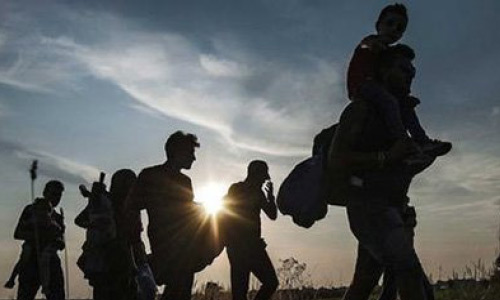KABUL - Living conditions for Afghan returnees, conflict-induced internally displaced persons (IDPs) and the communities hosting them over the past two years have slightly improved.
Aaccess to education and other services has slightly improved post return and the use of child labour has declined, a statement from UNHCR said on Wednesday.
Some 61% of boy children and 36% of girl children, who returned to Afghanistan in 2018, are currently in school, compared with 55% of boys and 30% of girls in 2017.
Only 5% of 2018 returnees rely on child labour as a coping mechanism, compared to last year's estimate of 16%. Access to healthcare has improved slightly, with 27% of 2018 returnees being unable to access healthcare compared to 31% in 2017.
Access to water and civil documentation has remained stable. A lack of housing, jobs, income, food security, healthcare, safe drinking water and livelihoods opportunities have been cited as the main obstacles to the sustainable reintegration of returnees and other displaced Afghans.
These factors have led to increased population movements with returnees less likely to be living in their province of origin than they were in 2017.
While perception of security has improved among returnees and IDPs, which may influence reduced movements, there is an increased desire among IDPs to leave their current displacement location compared with 2017, the survey finds.
The survey contributes to understanding of the return process, the influence of household characteristics and prevailing economic and security considerations and living conditions of Afghans, who have returned to their homeland.
For example, the survey finds that food security among the host community has improved since 2017 while it has deteriorated among returnees and IDPs.
In November 2018, UNHCR commissioned Orange Door Research and VOTO Afghanistan to use mobile phone surveys to collect real-time data of returnee, IDPs and host community populations.
Nearly 14,500 surveys were conducted between November 2018 and April 2019, providing UNHCR with a detailed view of a range of protection and socioeconomic challenges returnees and IDPs face across Afghanistan.
Nearly 15,700 Afghan refugees returned under the UNHCR-facilitated voluntary repatriation programme in 2018, with the majority returning from Pakistan, followed by smaller numbers from Iran and other countries.
This was 73% lower than the 58,800 refugees who returned in 2017, which can generally be attributed to the deteriorating security and economic situation in Afghanistan.
Returnees cited a decline in their incomes in 2018. Roughly 56% of 2017 returnees report earning at least 5,000 afs (approximately USD 67) per month.
However, only 47% of 2018 returnees report such earnings, highlighting that incomes are lower among more recent returnees. Income among IDPs also declined.
No significant improvement or deterioration in tensions with host communities has been seen. The main trend has been an increase in neutral feelings towards returnees. Similar trends were observed for IDPs.
The study finds that 96% of beneficiaries report satisfaction with the assistance they received from UNHCR, not only immediately after their return but also when they try to reintegrate within their communities. (Pajhwok)
Home » Afghanistan » Security, Economic Challenges Stay High for Returnees
Security, Economic Challenges Stay High for Returnees

